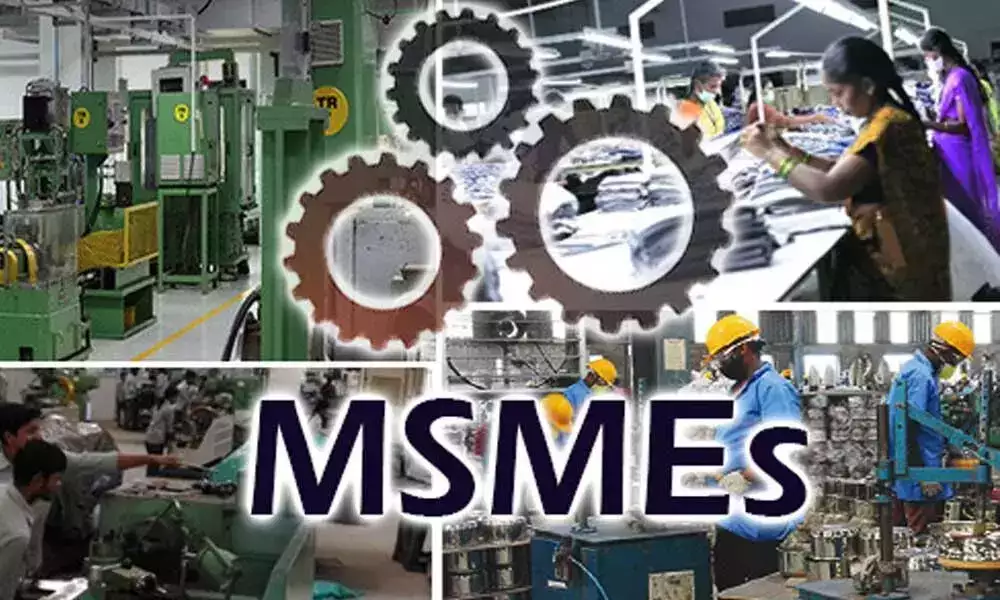Hey, like this? Why not share it with a buddy?

India’s micro, small and medium enterprises have new definitions that promise to open doors wider for them this financial year as well as improve their chances of securing delayed payments faster. The Union Government, in a notification dated 21st March, amended the definitions of micro, small and medium enterprises, raising limits for investments in plant and machinery as well as turnover from this fiscal year. The new definitions will push a considerable number of medium-sized businesses into the category of small enterprises, allowing them access to benefits such as the Government’s public procurement policy, the Government’s e-marketplace (GeM) for exports and access to dispute resolution services for delayed payments. India’s Micro, Small, and Medium Enterprises Development (MSMED) Act, which came into force in 2006, allowed only micro and small enterprises access to certain benefits, leaving out businesses categorized as medium-sized enterprises. Delayed payments have been the most common issue plaguing India’s MSMEs, especially if this involved micro and small enterprises trying to secure dues from large companies. Now, a larger number of newly categorized micro and small enterprises can avail the services of the Micro and Small Enterprises Facilitation Councils (MSEFCs), which use methods such as arbitration, conciliation and mediation to resolve delayed payments disputes. But of the ₹28,398 crores payable to MSMEs from 92,794 cases filed, MSEFCs had resolved only 50,507 disputes over dues worth about ₹8,740 crores as of 12 March, as per the Government’s Samadhaan platform for tracking disputes related to delayed payments. In terms of wider market access, more micro and small enterprises can now supply their goods and services to the government. Under the Centre’s public procurement policy, every ministry and public sector undertaking has to procure at least 25% of its needs from micro and small enterprises. All public procurement is handled on the government e-marketplace.
‘An imperative move’:
Union Finance Minister, Nirmala Sitharaman in her budget for 2025-26 proposed wider definitions for micro, small and medium enterprises, saying this would “help them achieve higher efficiencies of scale, technological upgradation and better access to capital”. MSME industry associations naturally welcomed the new definitions, saying these now align closer with global standards. “The change in definition is a natural step taken by the Government to align the definition of Indian SMEs with the size and turnover limits prevalent around the world,” said Vinod Kumar, president, India SME Forum. “With the CBAM and other trade barriers springing up around the world, it was imperative to offer similar protection to our MSME exporters, as is available to SMEs in developed markets,” he said. CBAM refers to the European Union’s Carbon Border Adjustment Mechanism—the world’s first ‘carbon border tax’ on imports of carbon-intensive goods such as steel, cement, fertilizers and aluminum to meet the region’s climate target. As per the new definitions, micro businesses can invest up to ₹2.5 crores in plant and machinery and have an annual turnover of up to ₹10 crores. Their earlier limits were ₹1 crore and ₹5 crores, respectively. The Government has similarly tweaked the investment and turnover limits that are used to categorize small and medium enterprises. Now, small enterprises are defined as those with investment in plant and machinery under ₹25 crores and turnover under ₹100 crores. The definition of medium enterprises has been widened to include investment up to ₹125 crores and turnover up to ₹500 crores. Previously, the investment limit for medium enterprises was ₹50 crores and turnover had to be under ₹250 crores. As of November, India had about 61.62 million micro enterprises, 470,492 small enterprises and 34,752 medium-sized businesses, as per the Ministry of Micro, Small and Medium Enterprises’ Udyam registration platform. Under the new definitions, about 12,000 entities with up to ₹500 crores of turnover will be eligible to register as a medium enterprise, per industry estimates.
Source : https://taxupdates.cagurujiclasses.com/msme-makeover-new-definitions-unlock-bigger-benefits-faster-resolutions/
Related Posts
SEARCH SME E-News
RECENT POST
- After labour codes rollout, Centre to double down on job-intensive sectors in FY-27 budget
- SME FINANCE SUMMIT
- Exploring Better Economic and Diplomatic Relations Between INDIA AND CHINA
- SME MANUFACTURERS AND EXPORTERS SUMMIT – NASHIK
- Government to meet venture capitalists today to fast-track FDI and FII inflows
Categories
- Achievements
- Banking & Finance
- Branding & Marketing
- Business Ethics & Culture
- Business talk
- Business Tycoons
- Capital Market
- Corporate Story
- Davos
- Economy
- Emerging Market
- Entrepreneurial Leadership Dialogue
- events
- Exports
- Grievances
- Growth
- Impact on Business
- Import
- India Growth Story
- Industry
- Innovation and Invention
- Innovative Ideas
- International Affairs
- International Trade
- jobs career
- Manufacturing
- Meeting
- MSME
- Others
- Packaging
- Pharma
- Policies & Schemes
- Regulatory Change
- Schemes
- Skill Development
- SME Talks
- Start-up
- Swot Analysis
- Tax
- Technology & Research
- Textiles
- Travel
- Uncategorized
- Viksit Bharat 2047- Strategies, Contribution, Initiatives and Efforts
- Women Entrepreneurs
- World Economic Forum





